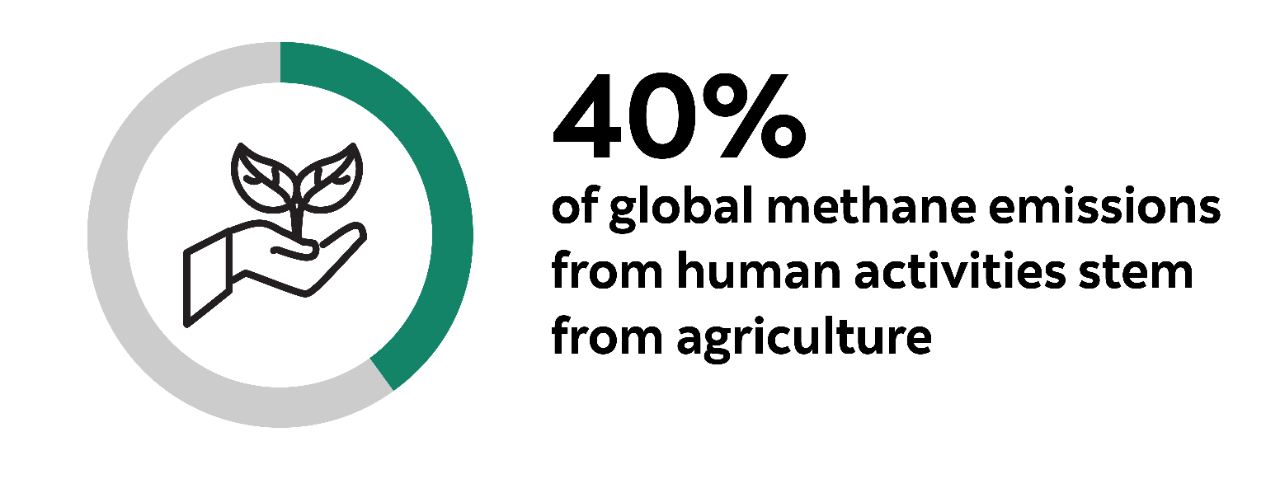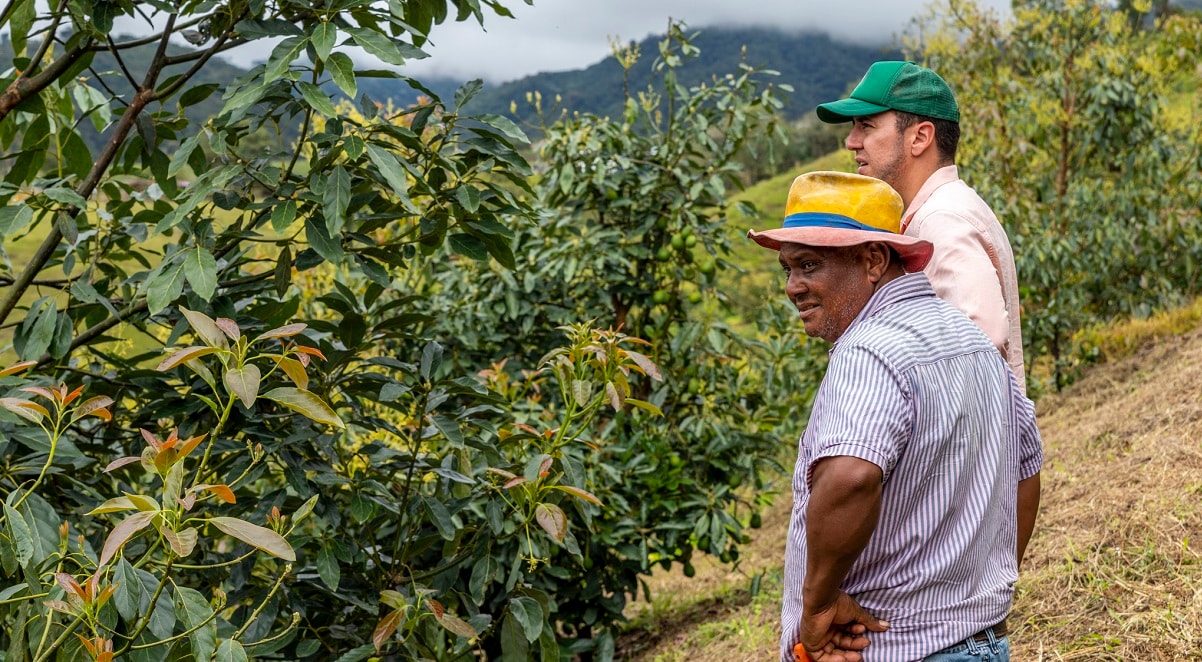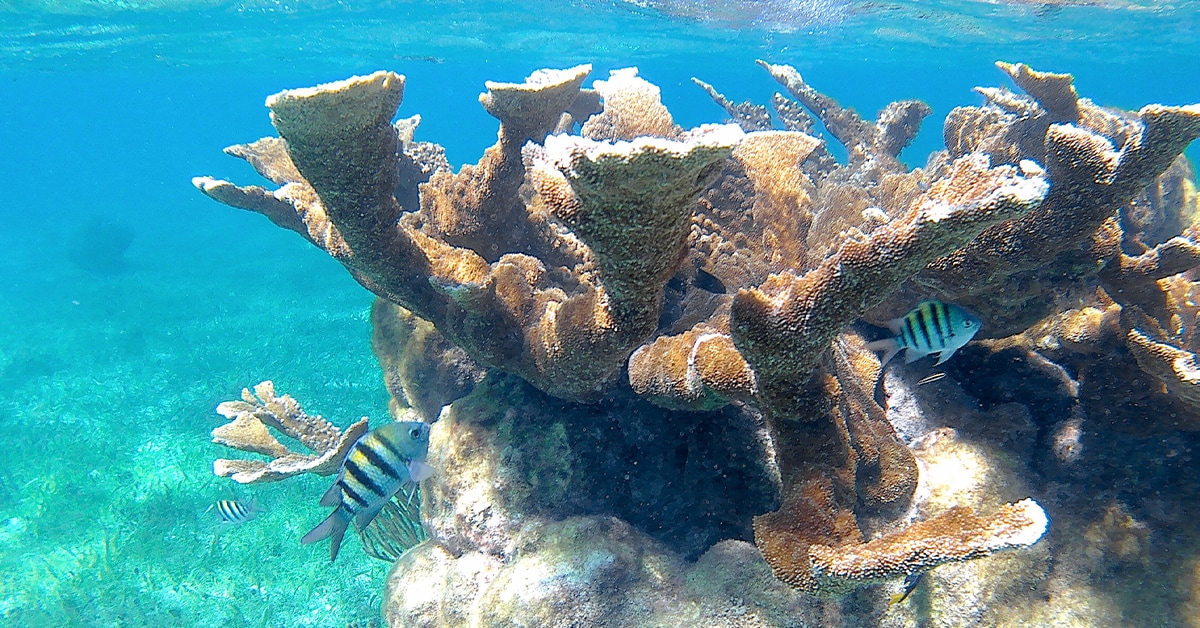One of the biggest challenges world leaders face is how to feed Earth’s 8.1 billion people while trying to slow a growing climate crisis. In more remote, rocky outcrops of the world, where growing fresh produce is difficult, finding ways to produce food sustainably while reducing greenhouse gas emissions will require looking at new ways to use existing tools.
That’s the mission of a team of researchers in Environmental Science at Memorial University of Newfoundland’s Grenfell Campus in Corner Brook. Led by Assistant Professor Christina Smeaton (pictured) and Professor Lakshman Galagedara, the team aims to determine whether the centuries-old practice of spreading seaweed on fields and garden patches can produce nutrient-rich fresh produce while increasing soil carbon storage and reducing greenhouse gas (GHG) emissions.
“Seaweed is potentially a good source of nutrients,” Smeaton said. “It also captures carbon dioxide from the atmosphere as it is growing and it prevents people having to use synthetic fertilizers, which emit nitrous oxide, a very potent greenhouse gas.”
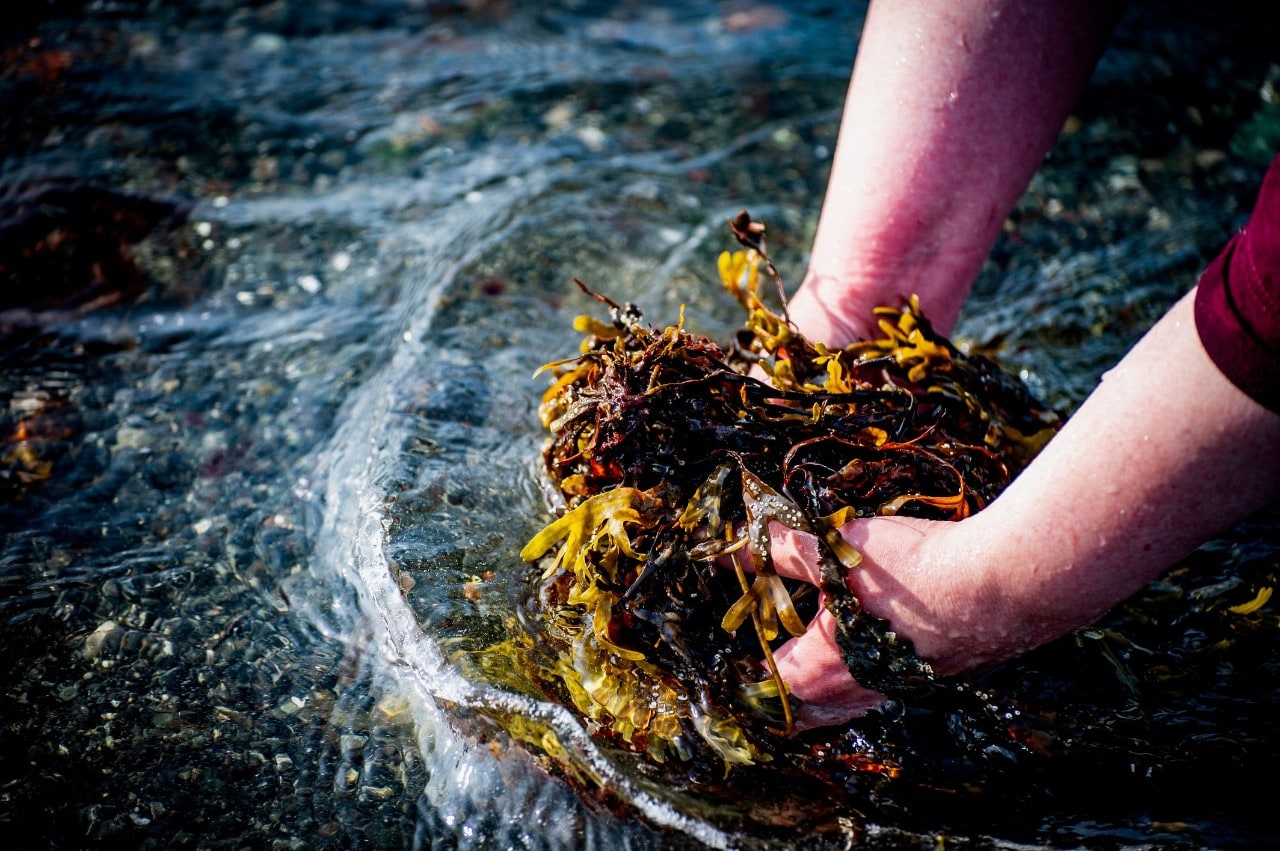
Photo credit: Lorilee Pike, Grenfell, Memorial University
In Newfoundland and Labrador food producers are hampered by a short growing season and rocky, infertile soil leaving locals reliant on a tenuous transport system to bring in fresh produce most of the year. Last year, that supply line was tested when Fiona, after becoming an extra-tropical cyclone, devastated much of Port aux Basques, the province’s main port of entry for goods. If the province is to grow more fresh produce, the researchers think easy access to high-quality fertilizers could be key, especially if it hopes to come close to meeting 2050 net-zero-emissions goals set by the Paris Agreement.
Memorial University’s project — Reducing carbon footprints: Rooting for net-zero emissions using seaweed as a fertilizer — is one of 10 to receive a grant this year from Scotiabank’s $10-million Net Zero Research Fund (NZRF). The fund was set up in 2021 to provide up to $100,000 to individual projects that further research for positive environmental outcomes as part of Scotiabank’s Climate Commitments. Since its inception, the fund has provided $2 million to 21 organizations in the Americas exploring decarbonization and climate-related systems change. The NZRF is part of the Scotiabank Climate Change Centre of Excellence, an initiative through which the Bank can contribute to the global conversation on climate change and build a better world for everyone.
"One of the objectives of the Net-Zero Research Fund is to facilitate projects that directly support and build decarbonization pathways. The agriculture sector represents approximately 11% of GHG emissions globally, and a similar ratio of 8.1% of Canada's emissions. We are pleased to see The Memorial Project, as well as three other winners this year, dedicating significant research to solve the issues of carbon sequestration, sustainable agriculture practices and policy recommendations in this sector,” said Kim Brand, Vice President and Global Head of Sustainability at Scotiabank.
“Memorial University’s research has the potential to help mitigate both food insecurity and greenhouse gas emissions. We are proud to be supporting the research team as it looks to explore seaweed’s role in growing food sustainably.
“Climate change is a high priority for Scotiabank as we continue to enable leading Canadian and international academic institutions and think tanks to drive positive environmental action through their research,” Brand said.
Methane emissions
More than half of global methane emissions stem from human activities in three sectors: fossil fuels (35%), waste (20%) and agriculture (40%), a United Nations Global Methane Assessment notes. In the agricultural sector, livestock emissions from manure and enteric fermentation represent roughly 32%. Currently available measures could reduce emissions from these sectors by as much as 45%, by 2030, the assessment says.
Agriculture emits two main greenhouse gases, Smeaton said. Methane gas from the stomachs of cows, and from the breakdown of manure on farmer’s fields or during storage, is the largest emitter from agriculture. Less talked about, she said, is nitrous oxide, a very potent greenhouse gas that is produced from nitrogen-based fertilizers.
Studies are underway that look at how the organic compound bromoform, which is found in seaweed, helps reduce the methane emitted by cows, she said, adding that the Memorial team is looking to extend this science to agricultural soils. “The same microbes found in the stomachs of cows that are responsible for producing methane are found in soil, so we are interested in looking at whether or not applying seaweed as fertilizer will reduce methane emissions. We’re the first to look at the benefits of seaweed fertilizer application through the lens of climate change mitigation,” she said.
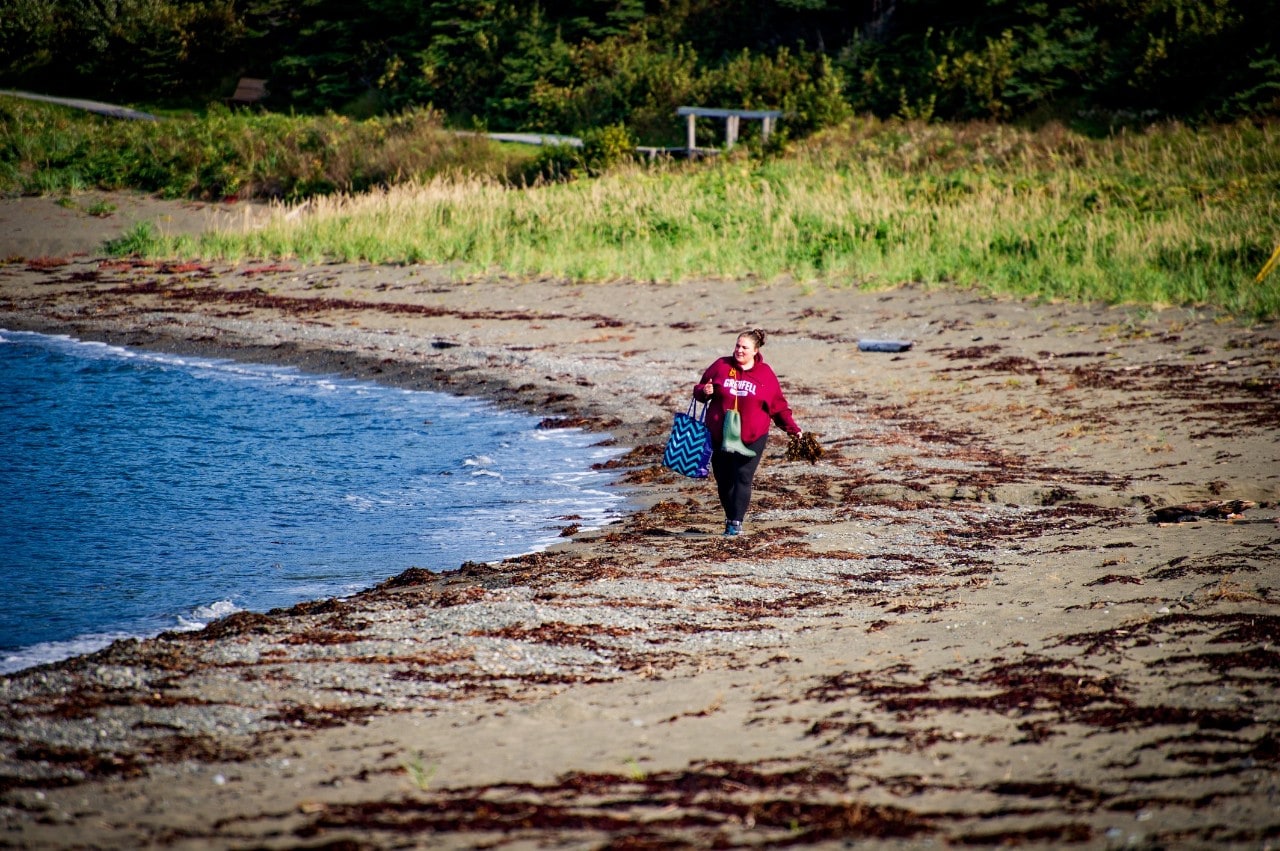
Photo credit: Lorilee Pike, Grenfell, Memorial University
Access to seaweed and knowledge
Shorefast, a social enterprise on Fogo Island that brings together community businesses, initiatives, and programming to strengthen community economic development — best-known for spearheading the world-renowned Fogo Island Inn — has partnered with the project to provide access to seaweed and local knowledge, Smeaton said.
Given the long history of using seaweed as a fertilizer on Fogo Island and Shorefast’s strong community ties, they are important knowledge connectors for the Memorial team, about how seaweed has been and is being used by food producers.
“We can approach this from a very scientific way of thinking, but also recognize that there’s a lot of valuable knowledge from the past,” Smeaton said.
End goal
One of the goals set out by the research team is to determine the concentrations of bromoform and nutrients in different types of seaweed collected from Fogo Island and Western Newfoundland. A second goal is to conduct laboratory experiments to determine which seaweed type would work best as a fertilizer while also reducing methane and nitrous oxide.
“Ultimately, I would like to see guidelines for seaweed to be harvested responsibly from designated areas and then to potentially inform future seaweed farming and applications,” Smeaton said.
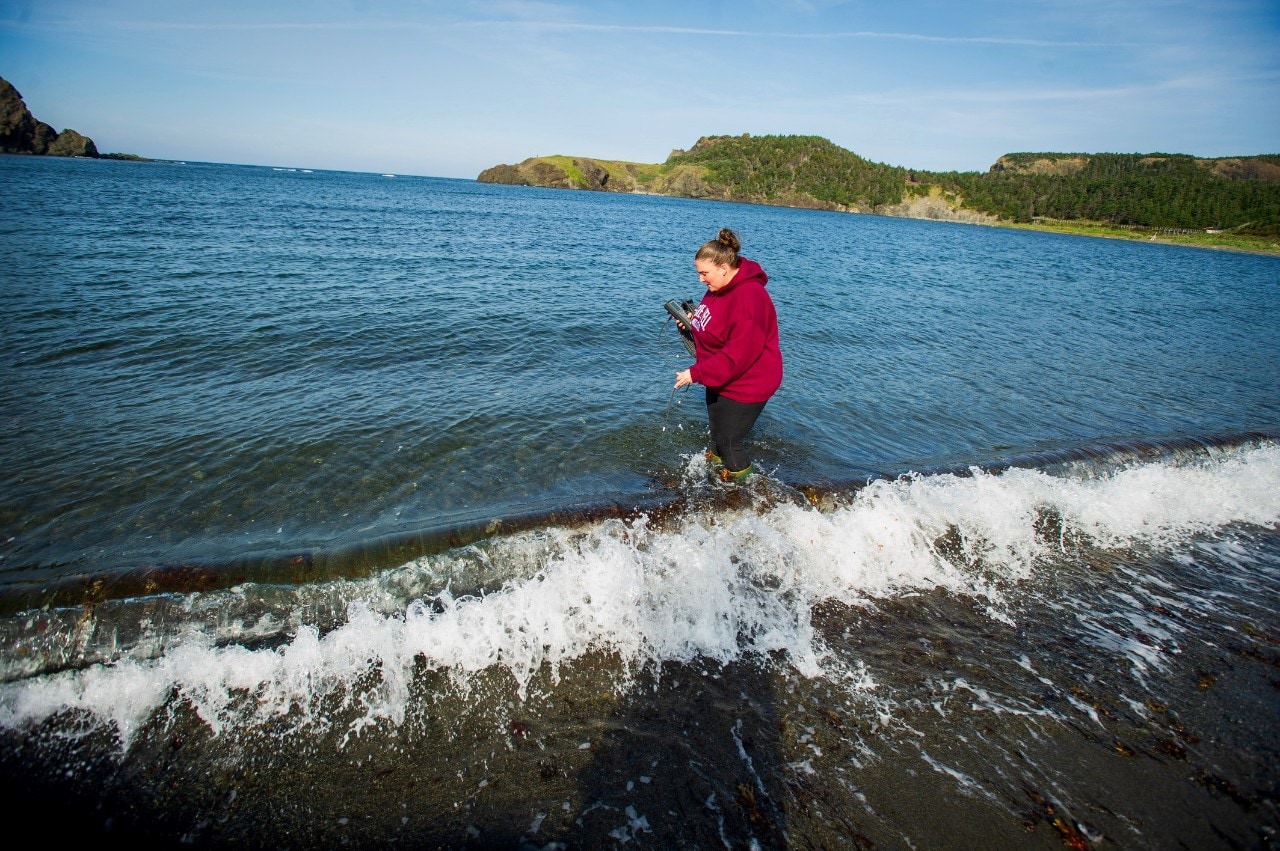
Photo credit: Lorilee Pike, Grenfell, Memorial University
As a junior researcher in a fairly remote location, Smeaton is grateful to Scotiabank for the funding, which is earmarked for sample analyses, field work and a year’s salary for master’s student working on the project. “There’s not a lot of private funding available for more creative projects to get to net zero. I also appreciate that it’s open to all the Americas. I like that there’s opportunity for different perspectives from countries outside of Canada,” she said.
Ultimately, getting to net zero will require developing innovative solutions across all economic sectors including agriculture.
“Our project isn’t a silver bullet for agriculture to get to net zero quicker, but I think it’s worth looking at in a way that’s holistic and sustainable,” Smeaton said.
“And maybe we’ll find out that Newfoundland and Labrador food producers have already been contributing to reducing greenhouse gas emissions and that other people can learn from our experience.”
Go to Scotiabank’s Climate Change Centre of Excellence to find out about the projects being done by all 2023 Net Zero Research Fund recipients.
Read more about how the Net Zero Research Fund is helping further research for positive environmental outcomes in the articles highlighted below.


